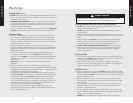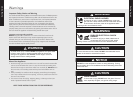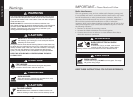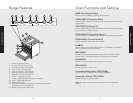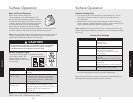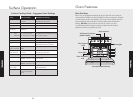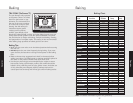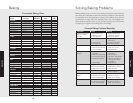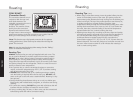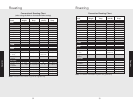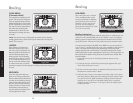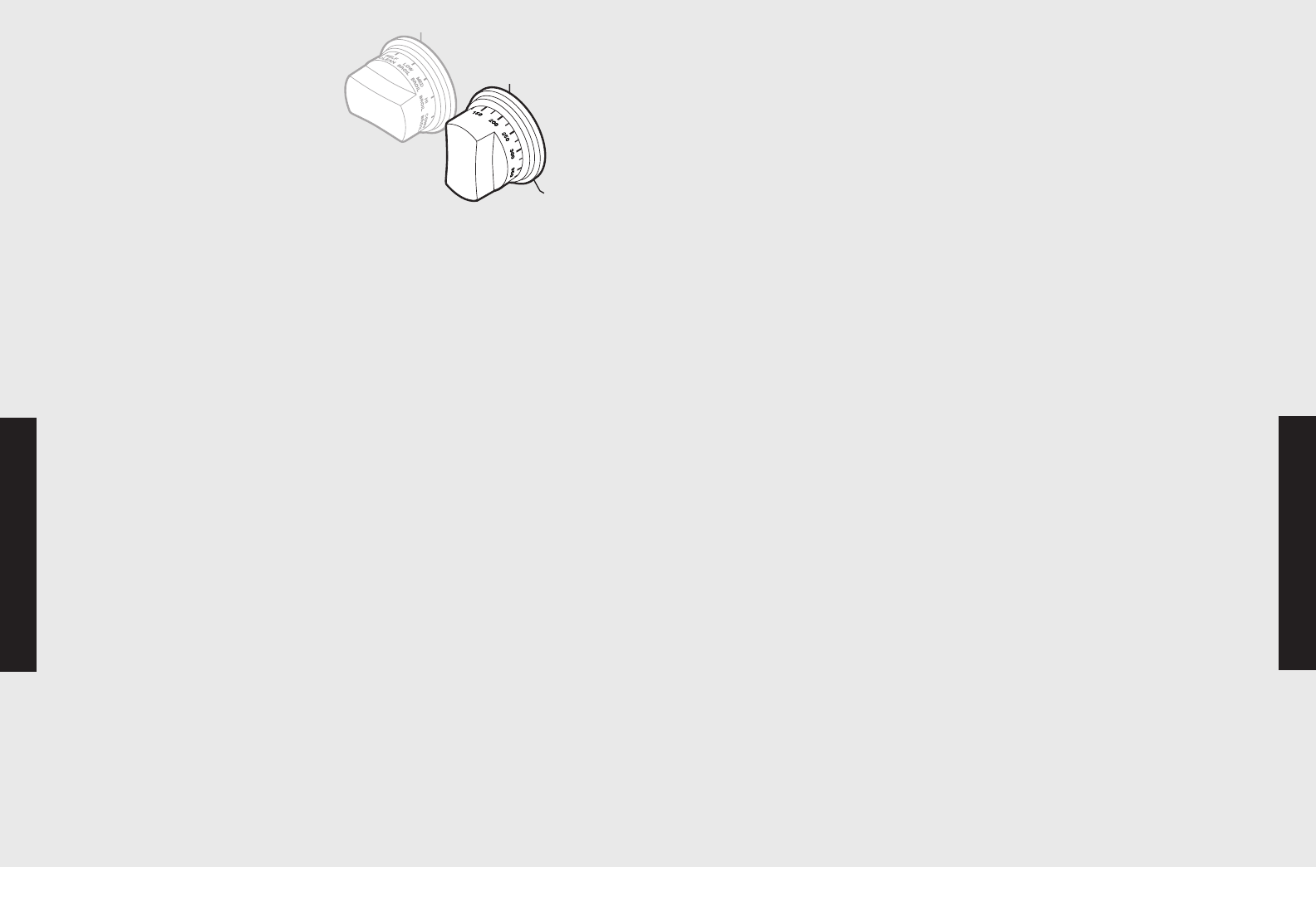
23
Conventional and Convection Cooking
Because of variations in food density, surface texture and consistency,
some foods may be prepared more successfully using the conventional
bake setting. For this reason, conventional baking is recommended
when preparing baked goods such as custard. The user may find other
foods that are also prepared more consistently in conventional bake.
This is perfectly normal. Convection cooking is a cooking technique
which utilizes fan forced air to circulate heat throughout the entire
oven creating the optimum cooking environment. Cooking with
convection is intended when performing multi-rack baking and for
baking heavier foods.
Conventional and Convection Cooking Tips
• As a general rule, to convert conventional recipes to convection
recipes, reduce the temperature by 25° F (-3.9° C) and the cooking
time by approximately 10 to 15%.
• Cooking times for standard baking and convection baking will be the
same. However, if using convection to cook a single item or smaller
load, then it is possible to have 10-15% reduction in cooking time.
(Remember convection cooking is designed for multi-rack baking or
cooking large loads.)
• If cooking items which require longer than 45 minutes, then it
is possible to see a 10-15% reduction in cooking time. This is
especially true for large items cooked in the convection roast
function.
• A major benefit of convection cooking is the ability to prepare foods
in quantity. The uniform air circulation makes this possible. Foods
that can be prepared on two of three racks at the same time include:
pizza, cakes, cookies, biscuits, muffins, rolls, and frozen convenience
foods.
• For three-rack baking, use any combination of rack positions 2, 3, 4,
and 5. For two-rack baking, use rack positions 2 and 4 or positions 3
and 5. Remember that the racks are numbered from bottom to top.
See “Oven Features” illustration.
• Items cooked in a convection function can be easily over baked. This
being the case, it is usually a good idea to pull items out of the oven
just before they seem to be done. Items will continue to cook right
after they are set out of the oven.
22
Using the Oven
Preheat
For best results, it is extremely
important that you preheat your
oven to the desired cooking
temperature before placing food
items in the oven to begin cooking. In
many cooking modes, partial power from the
broiler is used to bring the oven to the preheat
temperature. Therefore, placing food items in the
oven during the preheat mode is not recommended.
The Viking Rapid Ready™ Preheat System is engineered so that
the oven is brought to the desired set temperature in a manner which
will provide the optimum cooking environment based on the selected
cooking mode in the shortest possible time.
For instance, the preheat mode for TruConvec™ is designed to be
brought up to the set point temperature in a different manner than the
preheat mode for conventional bake. This is because TruConvec™ is
designed for multi-rack baking. So it is extremely critical that all rack
positions have reached the desired cooking temperature. As a result, it
is normal for oven to take slightly longer for the oven to preheat to
350°F in TruConvec™ mode when compared to the amount of time it
takes to preheat the oven cavity to 350°F in conventional bake mode.
Also, preheat time can vary based on some external factors such as
room temperature and power supply. A significantly colder room
temperature or a power supply less than 240 VAC can lengthen the
time it takes for the oven to reach the desired set temperature.
O
VE
N
F
U
N
C
T
I
O
N
O
VE
N
T
E
M
P
E
R
A
T
U
R
E
Operation
Operation
Using the Oven




